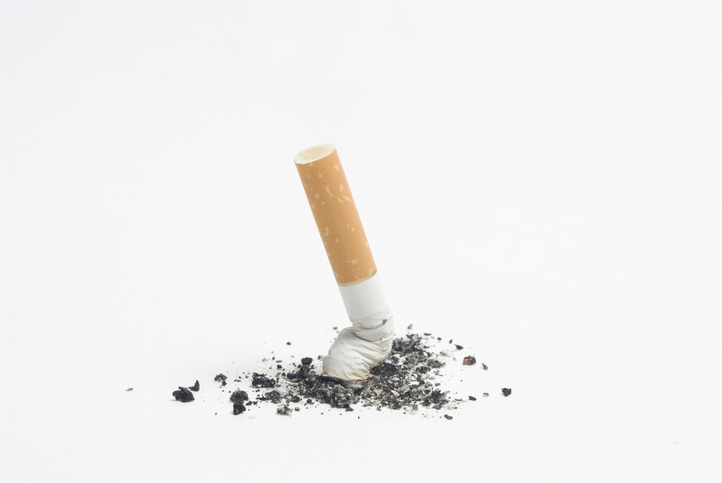Dr Sean Semple, Associate Professor, Institute for Social Marketing
Dr Ruaraidh Dobson, Research Assistant, Institute for Social Marketing
Professor Kate Hunt, Professor Institute for Social Marketing

Breathing second-hand tobacco smoke (SHS) has been known to be harmful to health for decades. Local and national rules to tackle this harm have come a long way: from a ban on in-flight smoking in 1977 through to restrictions on smoking in cars in the UK in 2015/6. The biggest shift in policy in the UK was smoke-free public places legislation in 2006/7. This made it illegal to smoke in an indoor public space including almost all workplaces. Bars, restaurants, offices, factories all became smoke-free.
As a result, tens of millions of workers and the people who visited those workplaces were protected from SHS, which fell by 86% in bars and pubs in Scotland. Studies demonstrated health benefits from reductions in heart-attack admissions through to improved respiratory health of workers. One reason for the legislation’s success in bars and restaurants was the simplicity of the rules. No smoking indoors – no exceptions based on arguments like quality of ventilation, venue size, or serving food.
But the 2006/7 legislation didn’t apply to absolutely every workplace. In some cases, workers and people within a workplace could still smoke in areas that were considered to be their home environment, such as on an oil rig, in a care home or in a prison. In Scotland that meant that approximately 4,000 prison staff and 8,000 people in custody continued to be regularly exposed to SHS.
Where smoking is still permitted, people in custody are nearly four times more likely to smoke than the general population with nearly 72% of people in custody in Scotland reporting that they were current smokers in 2015. Tobacco and smoking has long had a cultural significance in prison life and despite prison rules changing in 2006 to restrict smoking to within cells, staff and non-smoking persons in custody continued to be exposed to SHS.
In 2015 the Tobacco In Prisons study (TIPs) was funded by the National Institute for Health Research. The study team sought to work with the Scottish Prison Service to understand the impact of moving towards smoke-free prisons. At this time the Scottish Prison Service were looking at ways to protect staff and those within their charge from SHS – and to address the anomaly of workers within prisons being one of the last occupational groups to be exposed to SHS during the course of their normal working day.
TIPs initially measured SHS levels in all of Scotland’s prisons. Working with staff members in every prison, we collected over 144,000 minutes of fine smoke particle (PM2.5) measurements during November 2016 in locations around each prison. The results were published in July 2017. They showed that, although there was variation between prisons, each one had daily average levels above the World Health Organisation guidance on PM2.5 concentrations. On average prison staff were experiencing fine particulate exposure that was equivalent to living with a smoker within their own home, a high level of exposure to SHS.
Following the publication of these results on the 17th July 2017, the Chief Executive of the SPS announced that prisons in Scotland would become entirely smoke-free, with no smoking permitted anywhere indoors or outdoors, in November 2018. A comprehensive programme to support staff and people in custody to quit smoking was put in place, including extra NHS resources and free access to e-cigarettes. Prison canteens stopped selling tobacco several weeks prior to the ban on 30th November 2018.
In the week of implementation of the ban, the TIPs team again measured PM2.5 concentrations across all 15 prisons in Scotland. Instruments were put in place at the same sites as those measured in 2016 to measure SHS levels during the final days of November and the first few days of December 2018. The data showed marked improvements in air quality in all prisons. Concentrations of fine particles were down by an average of 81% on the first working day after the ban came in to place.
Because it was thought to be important to check whether these improvements in air quality could be sustained in the longer term, the TIPs team repeated an extensive measurement campaign again in May 2019 – six months after the ban was introduced. This final programme of air quality data collection also enabled the TIPs team to examine changes in staff exposure to SHS. Comparing the data from November 2016 with those in May 2019, the TIPs team calculated that the average prison officer was now inhaling 90% less PM2.5 than before, and showed lasting benefits in air quality.
TIPs has shown how partnership working between academic researchers, prison management and prison staff, health care and government policy-makers can facilitate the evolution of well-designed and effective policies to protect the health of workers and those within the care of prison facilities. Scotland’s bold example of protecting non-smokers and workers from SHS established in 2006 continues today in 2020, with a world-leading international example of how to tackle the complex problems of smoking in prison settings.
Funding
The Tobacco in Prisons study is funded by the National Institute for Health Research (NIHR) [Public Health Research Programme, project number 15/55/44]. The views expressed are those of the author(s) and not necessarily those of the NIHR or the Department of Health and Social Care.
